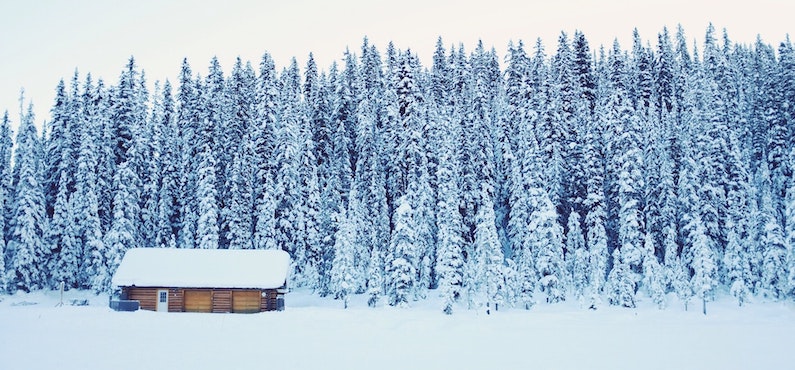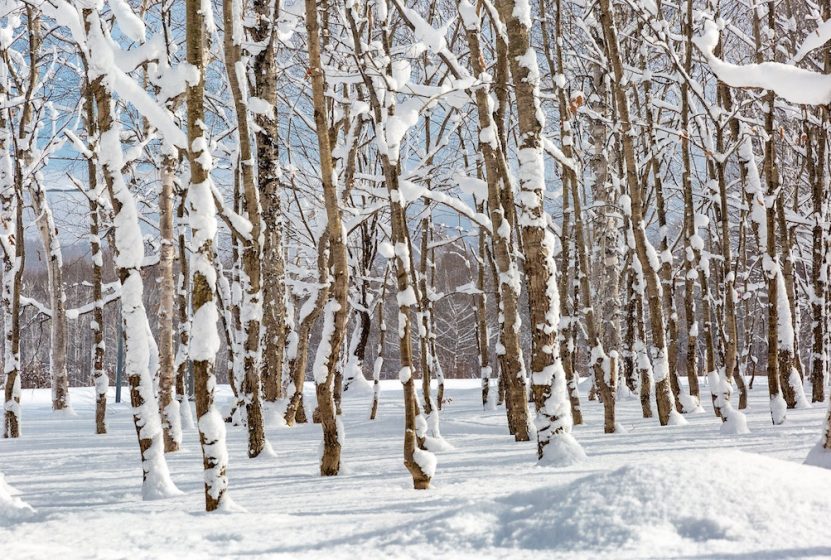When it comes to surviving the cold, snow, and ice of winter, plants don’t have as many options as animals. They can’t move into a cave or den and hibernate. And there’s a reason you don’t see mass herds of aspens or flocks of ferns migrating south for the winter.
Plants are rooted in place. They have to adapt to the conditions around them if they are to survive.
While winter climates still provide plants with some sunlight and soil nutrients, they cannot access water when it is frozen. They’ve had to develop unique energy conservation and storage mechanisms to survive those harsh conditions.
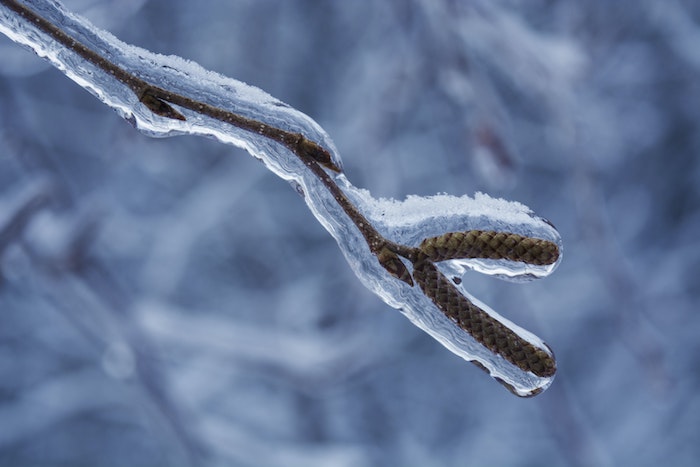
1. Surviving the cold by getting naked.
Unlike other plants, trees don’t have the option to spend the winter as seeds or rhizomes. They have to tough it out through the cold and arid conditions.
The large canopies of broad leaves on deciduous trees can be a substantial source of water loss, so they are dropped in the northern regions every fall.
That process starts in the summer. During this period of warmer temperatures and longer daylight hours, leaves produce more glucose than is needed for the plant’s growth. This excess glucose is converted to starch and stored for later use.
At the base of each leaf is a layer of abscission cells. Tiny tubes pass through these cells to carry water from the tree to the leaf and nutrients from the leaf back to the tree.
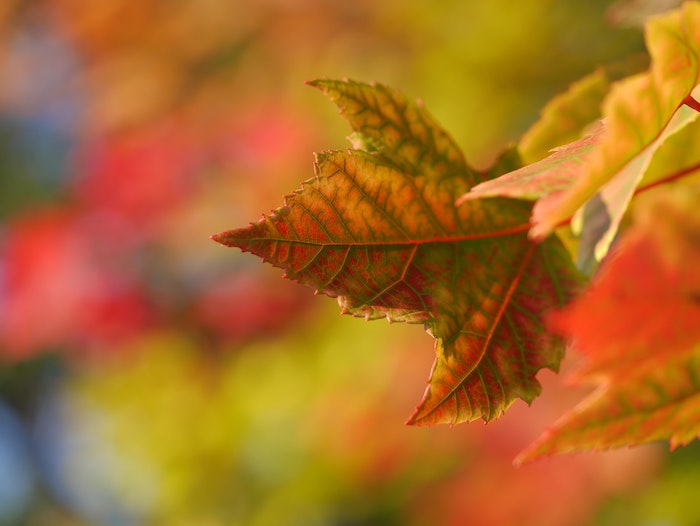
When the days start to get shorter, plants begin shutting down nutrient production in preparation for their winter dormancy. The abscission cells swell and form a hardened, cork-like barrier that cuts off the tubes. The glucose and waste products are trapped in the leaf, and no water or nutrients are passed between the leaf and the tree.
As chlorophyll begins to disappear, the colors that were already in the leaf become visible. At this point, the abscission layer continues to harden, a tear line is formed, and the leaf separates from the tree.
Trees also acclimate by slowly increasing their tolerance to cold. Water outside of the cell walls freezes first. When the water transforms from liquid to solid, a small amount of heat is released. This tiny bit of heat is enough to keep the water inside the cell from freezing.
Broad-leaf trees like maples, elms, and oaks lose their ability to move water as the temperature drops below freezing. The capillary network that moves water and nutrients through the tree can break, stopping the nutrient transport. This network has to be rebuilt in the spring for the tree to survive.
Thin-barked hardwood and fruit trees can also experience frost-cracking. This happens when the air temperature is below freezing, but sunlight on the bark can warm it to 70 degrees Fahrenheit. If water moves to this warmer area under the bark, it will rapidly freeze and cause tissue death. And once the sunlight disappears, the bark surface temperature drops quickly, and ice crystals will form inside the cells. The cell walls burst, and the tissue dies. In the spring, these damaged tissues dry out and crack on the tree’s south or southwest side.
2. Plant karma
Unlike trees, annual plants, like flowers, corn, and wheat, live only for one year in colder climates. In order to be reincarnated, at least in the plant world, annuals reproduce by creating seeds. When the plant dies in the fall, these seeds are dropped to the ground, buried under an insulating layer of soil, and then snow, to survive the winter.
Once the warm temperatures, more daytime hours, and moisture returns, the seeds germinate, and the plant gets to come back…as another plant.
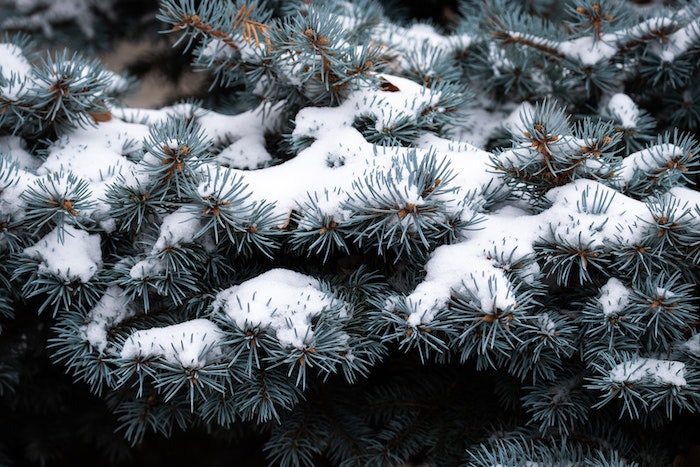
3. It’s not easy being green…unless you’re a pine tree.
Evergreens, like the ponderosa pine (Pinus ponderosa), have a narrow, conical shape that is pointed at the top. This configuration keeps snow from building up on the branches and damaging the trees.
This snow-shedding ability allows the trees to stay green year-round and continue a limited amount of energy production through photosynthesis. Evergreens still need to replace water lost through evaporation in their needles (needles are modified leaves). They do this by pulling water up from the soil through its roots. If the ground is frozen, however, the roots are unable to absorb the water.
Symptoms of this water loss area revealed by a brown or yellow “burned” tinge to the foliage that is facing the sun or exposed to the wind — where the evaporation is the greatest.
To help mitigate this damage, many conifers have specialized valves in their cells. These valves automatically seal off individual frozen cells to prevent a chain reaction of freezing throughout the tree’s tissues. Evergreen cells are also more robust than those found in deciduous trees, so they can better withstand the forces of ice expansion.
4. Snow is actually a warm blankie to a plant.
Rather than harming most plants, snow can act as an insulating blanket, or igloo, to protect the plant’s tissues from low temperatures and moisture-sucking winds. While snow is near freezing, it creates a pocket of air next to the plant’s exterior.
This insulating barrier provides a level of protection at a price. While the wind and cold air can’t reach the tissue, neither can sunlight.
5. Changing structures
Some plants avoid the cold temperatures altogether by ditching their above-ground leaves and stems and becoming dormant in the form of seeds or reducing their cellular activity.
Other plants move their energy storage organs underground like Rhizomes (underground root-like stems) and bulbs (short and thick stems). These structures function like solar batteries by providing enough stored energy reserves for the plant to survive during unfavorable winter conditions.
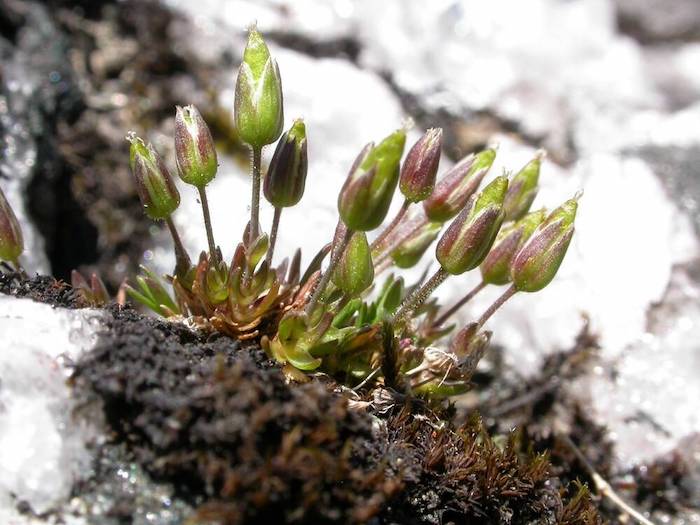
If you want to see hardcore plant adaptation to winter, you need to go where plants have to deal with bitter cold, high winds, and little sunlight on a year-round basis: the alpine and tundra biomes.
Trees are not common in either zone, but shrubs are. These survive due to their small size and low-spreading structures, like the cranberry bush (Vaccinium Vitis-idea). This protects them from heavy winds and cell-busting frosts. Since they are at ground level, they are also more likely to be covered by an insulating snow blanket.
Some plants are cushion-shaped, like the Arctic sandwort (Minuartia arctica). This structure lets moisture and temperature stay elevated within the plant throughout the winter.
And just because it’s cool…
Some perennial plants living in cold zones have evolved a type of natural antifreeze to survive winter temperatures. These antifreeze proteins reduce the formation and growth of ice between the plant’s cells.
Researchers from the University of Colorado at Boulder recently developed a synthetic molecule based on these plant proteins. By mimicking their antifreeze compounds, they could use the molecule to prevent ice crystal growth and the subsequent freeze-thaw damage to concrete infrastructures.
Just like animals, plants have evolved innovative ways to adapt to winter’s harsh conditions. These unseen processes of modifying their energy consumption and energy storage ensure these plants, or their offspring, will “spring back” to life once temperatures rise again.
